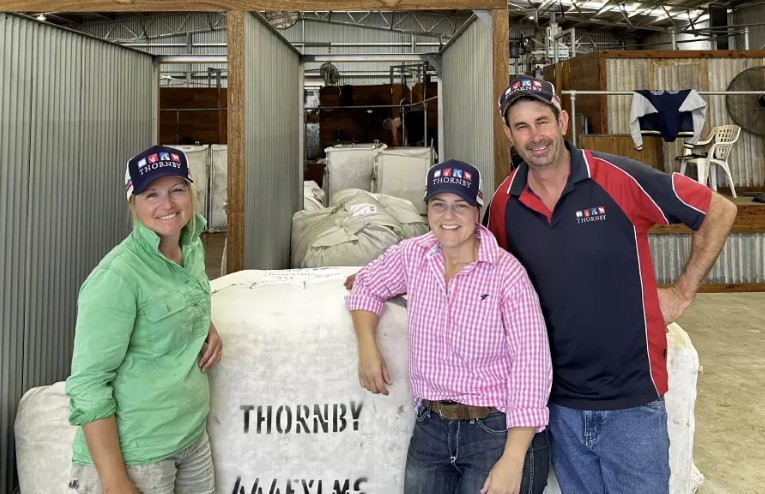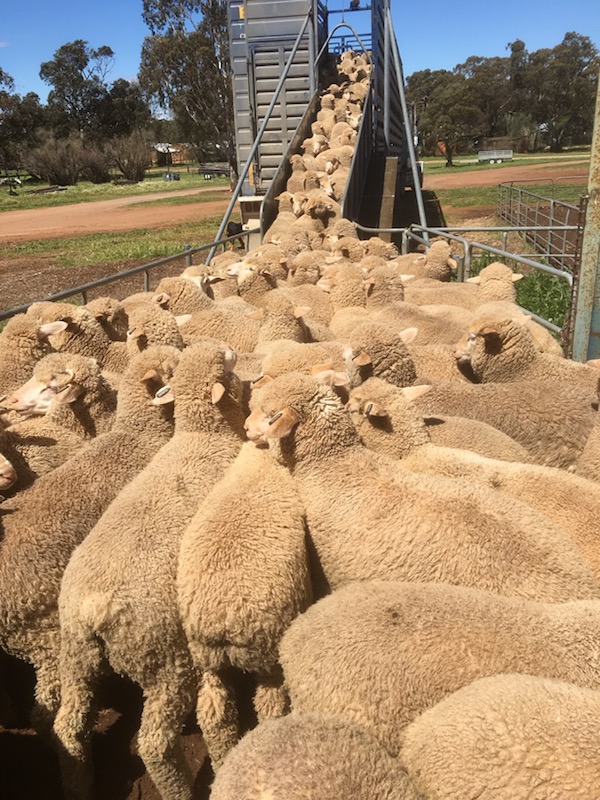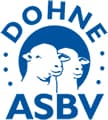Dohnes are a Standout
“Dohnes standout among different breeds.”

Thornby Feedlot’s Mel Simounds and Fiona and Alex McGorman who are hosting the LAMBEX Feedlot Trial at Sanderston. Lambs from three states will be fed for 60 days.
Alex McGorman
Thornby Feedlot
SANDERSTON, SOUTH AUSTRALIA
The Dohne breed is gaining popularity in feedlots, thanks to their ability to produce high-quality meat and generate similar skin values to Merino sheep.
Nestled just east of the Adelaide Hills, the McGorman family have been farming their Thornby property for over 120 years. Over time they have diversified and increased in scale. Today they annually crop 8,000 acres of broadacre cereal grains and hay and finish over 108,000 lambs through their AusMeat accredited lamb feedlot. Thornby proudly employs a team of over 25 staff members and is passionate about supporting and enabling future agriculture leaders.
Alex McGorman, manager of the Thornby feedlots, sees plenty of breeds come through the facility and said Dohnes are a standout among the different breeds they work with.
“We always have Dohnes in the feedlot, sometimes there’s quite a lot in there,” Mr McGorman said. “We
feedlot many different breeds and the Dohnes stand out for their doability. At our feedlot, we operate all year round with a capacity of around 27,000 sheep. Of that we would push through 7000 to 8000 Dohnes each year.”
Thornby source many of their Dohnes across South Australia, with some recently bought in from Ulooloo Stud at Hallett. Larger numbers are procured from western New South Wales.
“We get lots of Dohnes coming in from Broken Hill and around that region,” Mr McGorman said. “The station Dohnes come in bigger numbers from around Packsaddle where there’s quite a few operators that have the breed.”
Once in the feedlot, Mr McGorman said the sheep are started with a few days in scrub yards so they can acclimatise to the feedlot.
“We buy them in at weights between 35 and 45 kilos,” he said. “All up, they will be in the feedlot for about 70 days. After their time in the scrub yards on hay and straw, they will have a week on starter rations, a week on intermediate rations and then another eight weeks on the finisher rations.”
The rations used are a mix of barley, oats, lupins, and grain-based pellets.
At the end of the eight weeks, sheep are sold to Thomas foods at Lobethal, Tamworth, and Stawell.
Mr McGorman said Dohnes handle the feedlot environment very well.
“We find that they do better than a Merino as far as putting on weight,” he said. “When they’ve got wool on them, the shearing quality is good; you’re getting similar qualities of wool and similar skin values, but you’re getting a lot meatier carcass.”
Mr McGorman is heavily involved in the promotion of the sheepmeat industry. Recently, he was instrumental in organising Australia’s first major sheep meat feedlot competition based on full Meat Standards Australia grading. Thornby sent across a pen of Dohnes which were processed at Thomas Foods International’s Stawell plant in Victoria.
All up, 1500 lambs were entered in the 2024 LambEx AMPC Feedlot Carcass Competition – entrants came from South Australia, Victoria, and Western Australia. It is believed to be the largest cuts-based comparison of commercial lambs ever held in Australia.
Australian sheep producers entered lambs from 16 different breeds, including Merinos, Dohnes and Polwarths, British breeds, composites, Dormers, plus second cross terminal and maternal lambs, but no shedding sheep.
“We sent across 30 pens of 50 sheep that came through the feedlot,” Mr McGorman said. “They included 17 different breeds with one lot of Dohnes for a bit of a trial. Pindari was a big representative for Dohnes in that competition.”
Mr McGorman said that the response to the feedlot competition exceeded expectations with extra capacity added after entries started rolling in.
“Initial capacity allocated was approximately 1200 lambs and based on the national response we had to increase feedlot allocation up to 1800 to accommodate,” he said.
“Given the current state of play, the incentive for producers to combine lamb sales and also benchmark their production and capacity at the same time has been really appealing.”
He said results across breed types will be interesting as they have been subject to the same conditions and feed regime.
Awards and recognition will be announced at LambEx 2024 in Adelaide 7th to 9th of August 2024. The real benefit of the competition for entrants is to get the feedback and comprehensive data on their lambs.
It’s not only the superior Dohne meat that excites Mr McGorman, he said the breed’s fleece quality is also impressive. He is a producer that certainly knows his wool, with Thornby putting through almost 1000 bales of wool every year.
“Any sheep that come into the feedlot with any length of wool on them will get shorn. This adds up to almost three quarters of the lambs that come through,” he said.
Mr McGorman said he has seen more Dohnes coming into his feedlot in recent years.
“I think people have switched away from South African Meat Merinos to Dohnes,” he said. “Numbers aren’t exploding or anything, but we are seeing more than we used to, and that is considering that the national sheep flock is not growing at all.”
When the sheep are sent for processing, the Dohnes find their place among other breeds, Mr McGorman said.
As the owner of a large feedlot, Mr McGorman sees a lot of breeds, but said Dohnes are a genuine all-rounder with much to offer to the industry.
“Dohnes are very adaptable. Dohnes have a better lambing percentage, not to mention good wool, and meat,” he said. Their mothering ability is far better than a Merino as well. Dohnes are definitely a breed for the future.”
Original article courtesy of Kristin Murdock Pipeline Media.

Ulooloo Dohne Merino Stud, load of lambs on their way to Thornby Feedlot.










 Facebook
Facebook YouTube
YouTube Instagram
Instagram